I don't give community gardens much attention on this blog, as they're not usually very park-like. Jane Street Garden in Manhattan's West Village neighborhood is an exception, and more than a community garden anyway, notable for its long history (it was established in 1973) and relatively permanent status as well as its landscaping and carefully maintained condition.
Even on a cloudy February day, the garden looked inviting through the fence, geometrically speaking at least.
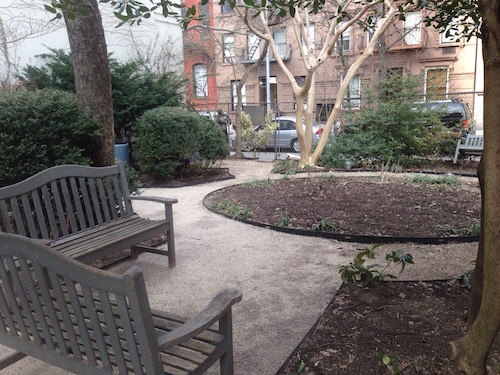
But when I read in a Gardener's Eye blog post from 2016 that it's open weekends from 9AM to 1PM "or whenever the gate is open weather permitting," I made a point of returning in April. And sure enough:
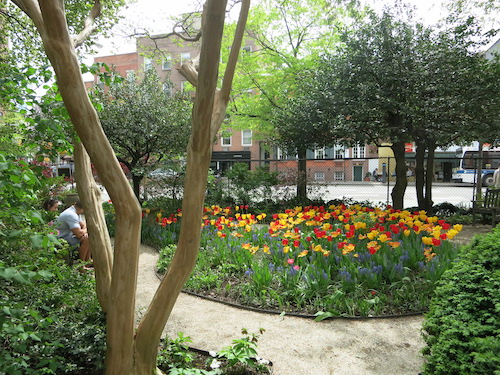
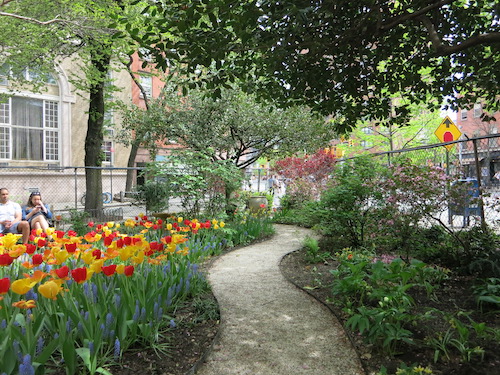
According to WestView News in a brief piece from January 2017 titled "Jane Street Garden Remains Resilient as Ever," "The garden is now being prepared to accommodate a new iron fence with a corner entrance. It is being funded by Councilman Corey Johnson and will be installed by the Parks Department in 2017." If a City Councilman and the Parks Department are involved, and there's no looming threat of development overrunning it, I say it's a park.
Plus, tulips.
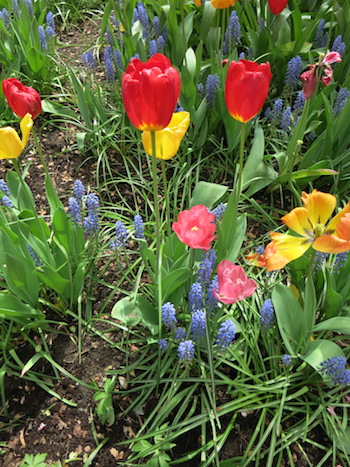
For a detailed – maybe too detailed – account of the complexities behind the park's birth, plunge into this 2007 account in The Villager by Patricia Fieldsteel. Here's just a bit of her dizzying yarn:
New York was in decline, sliding toward bankruptcy; people were leaving in droves for safer, greener places. The Jane St. Block Association raised money to buy trees for the then-treeless street. A chicken-wire fence was put around the garden; benches and seats added. The dress designer Mollie Parnis recognized the garden with a Dress Up Your Neighborhood Award in 1974.
Then in 1975, a catastrophe of cosmic proportions occurred. The plot, now known as “36 Jane Street, Block 625, Lot 34,” was bought at auction by a novice real estate developer, 26-year-old Gregory Aurre, Jr., of W. 12th St. Overnight, the garden was neck deep in mud. Aurre hired architect Stephen Lepp to design a four-story combined apartment/commercial building for the site. Jane Streeters charged the plan wasn’t in keeping with the street. Rumors circulated that quickly became accepted as fact: The building was to be a high-class brothel.
Sure enough, there's definitely some seedy love happening in this tiny triangular oasis.
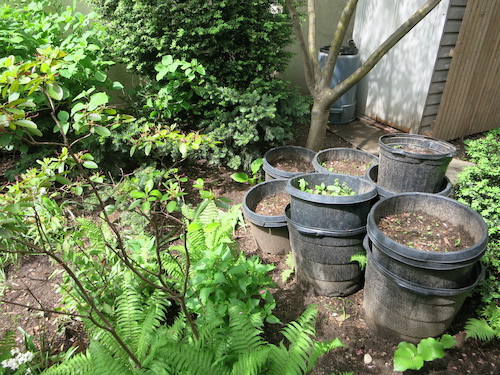
The layout of paths and the angles of the benches make it seem bigger than it is.
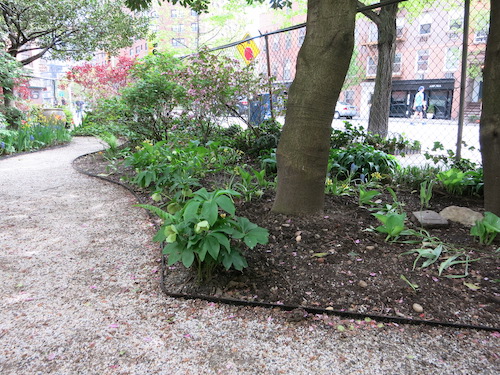
There's an endearing kind of honor system at work too. How often do you see a display of trust like this on city streets?
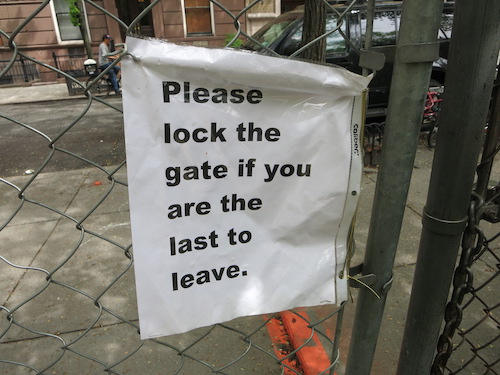
No comments:
Post a Comment